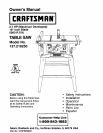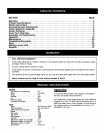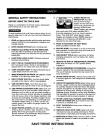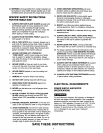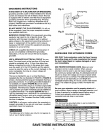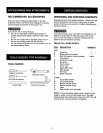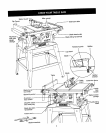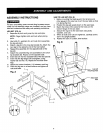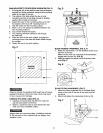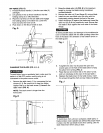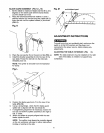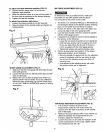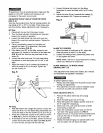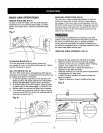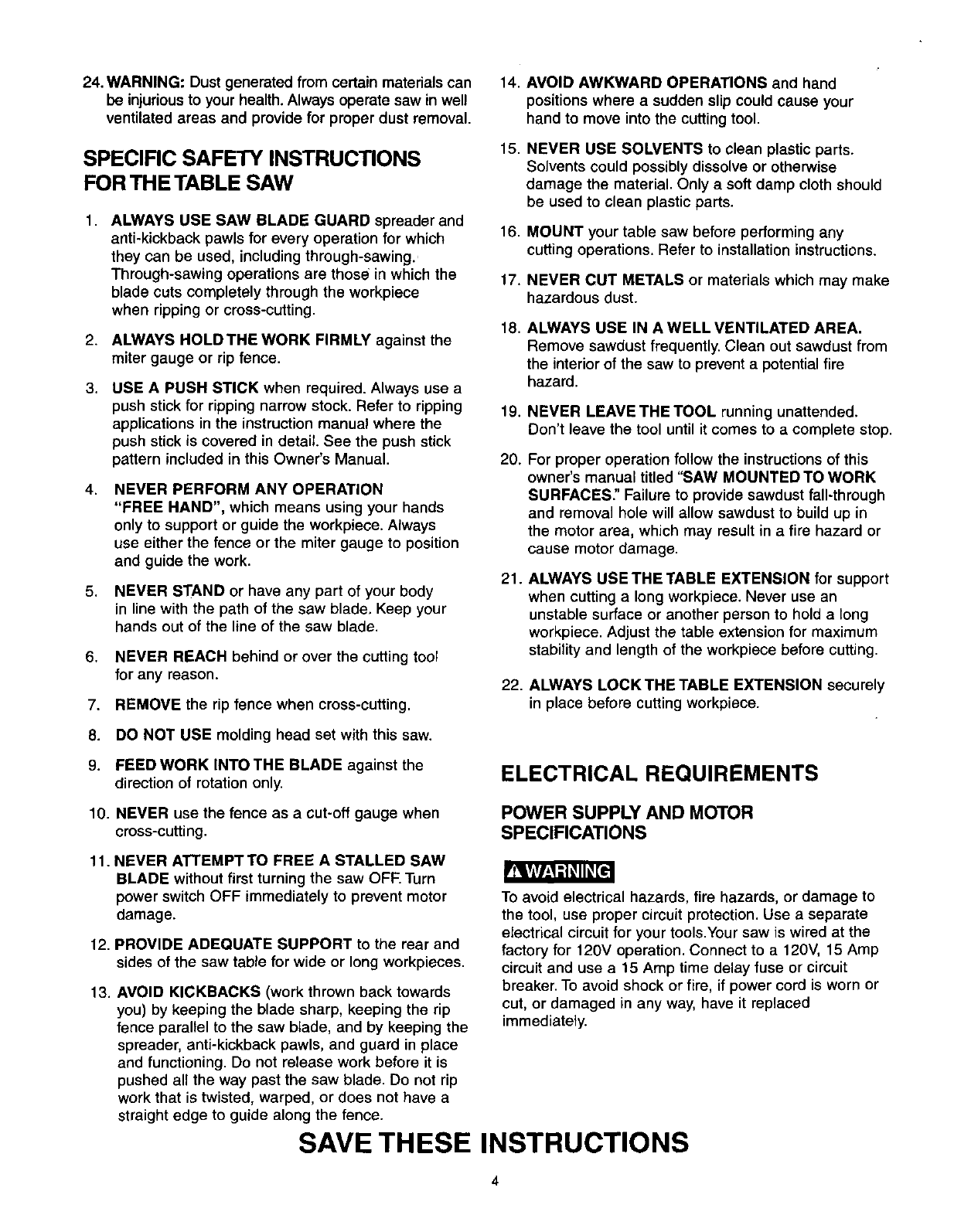
24. WARNING: Dust generated from certain materials can
be injurious to your health. Always operate saw in well
ventilated areas and provide for proper dust removal.
14. AVOID AWKWARD OPERATIONS and hand
positions where a sudden slip could cause your
hand to move intothe cuffing tool.
SPECIFIC SAFETY INSTRUCTIONS
FOR THE TABLE SAW
1.
2.
3.
4.
5.
ALWAYS USE SAW BLADE GUARD spreader and
anti-kickback pawls for every operation for which
they can be used, including through-sawing.
Through-sawing operations are those in which the
blade cuts completely through the workpiece
when ripping or cross-cutting.
ALWAYS HOLDTHE WORK FIRMLY against the
miter gauge or rip fence.
USE A PUSH STICK when required. Always use a
push stickfor ripping narrow stock. Refer to ripping
applications in the instruction manual where the
push stick is covered in detail. See the push stick
pattern included in this Owner's Manual.
NEVER PERFORM ANY OPERATION
"FREE HAND", which means using your hands
only to support or guide the workpiece. Always
use either the fence or the miter gauge to position
and guide the work.
NEVER STAND or have any part of your body
in line with the path of the saw blade, Keep your
hands out of the line of the saw blade.
6. NEVER REACH behind or over the cutting tool
for any reason.
7. REMOVE the rip fence when cross-cutting.
15.
16.
17.
NEVER USE SOLVENTS to clean plastic parts.
Solvents could possibly dissolve or otherwise
damage the material. Only a soft damp cloth should
be used to clean plastic parts.
MOUNT your table saw before performing any
cuffing operations. Refer to installation instructions.
NEVER CUT METALS or materials which may make
hazardous dust.
18. ALWAYS USE IN A WELL VENTILATED AREA.
Remove sawdust frequently. Clean out sawdust from
the interior of the saw to preventa potentialfire
hazard.
19. NEVER LEAVE THE TOOL running unattended.
Don't leave the tool until it comes to a complete stop.
20.
For proper operation follow the instructionsof this
owner's manual titled "SAW MOUNTED TO WORK
SURFACES" Failure to provide sawdust fall-through
and removal hole will allow sawdust to build up in
the motor area, which may result in a fire hazard or
cause motor damage.
21. ALWAYS USE THE TABLE EXTENSION for support
when cutting a long workpiece. Never use an
unstable surface or another person to hold a long
workpiece. Adjust the table extension for maximum
stability and length of the workpiece before cutting.
22. ALWAYS LOCKTHETABLE EXTENSION securely
in place before cutting workpiece.
8. DO NOT USE molding head set with this saw.
9. FEEDWORK INTOTHE BLADE against the
direction of rotation only.
ELECTRICAL REQUIREMENTS
10. NEVER use the fence as a cut-off gauge when
cross-cutting.
POWER SUPPLY AND MOTOR
SPECIFICATIONS
11. NEVER ATTEMPT TO FREE A STALLED SAW
BLADE without first turning the saw OFF. Turn
power switch OFF immediately to prevent motor
damage.
12. PROVIDE ADEQUATE SUPPORT to the rear and
sides of the saw table for wide or long workpieces.
13. AVOID KICKBACKS (work thrown back towards
you) by keeping the blade sharp, keeping the rip
fence parallel to the saw btade, and by keeping the
spreader, anti-kickback pawls, and guard in place
and functioning. Do not release work before it is
pushed all the way past the saw blade. Do not rip
work that is twisted, warped, or does not have a
straight edge to guide along the fence.
SAVE THESE INSTRUCTIONS
To avoid electrical hazards, fire hazards, or damage to
the tool, use proper circuit protection. Use a separate
electrical circuit for your tools.Your saw is wired at the
factory for 120V operation. Connect to a 120V, 15 Amp
circuit and use a 15 Amp time delay fuse or circuit
breaker. To avoid shock or fire, if power cord is worn or
cut, or damaged in any way, have it replaced
immediately.



